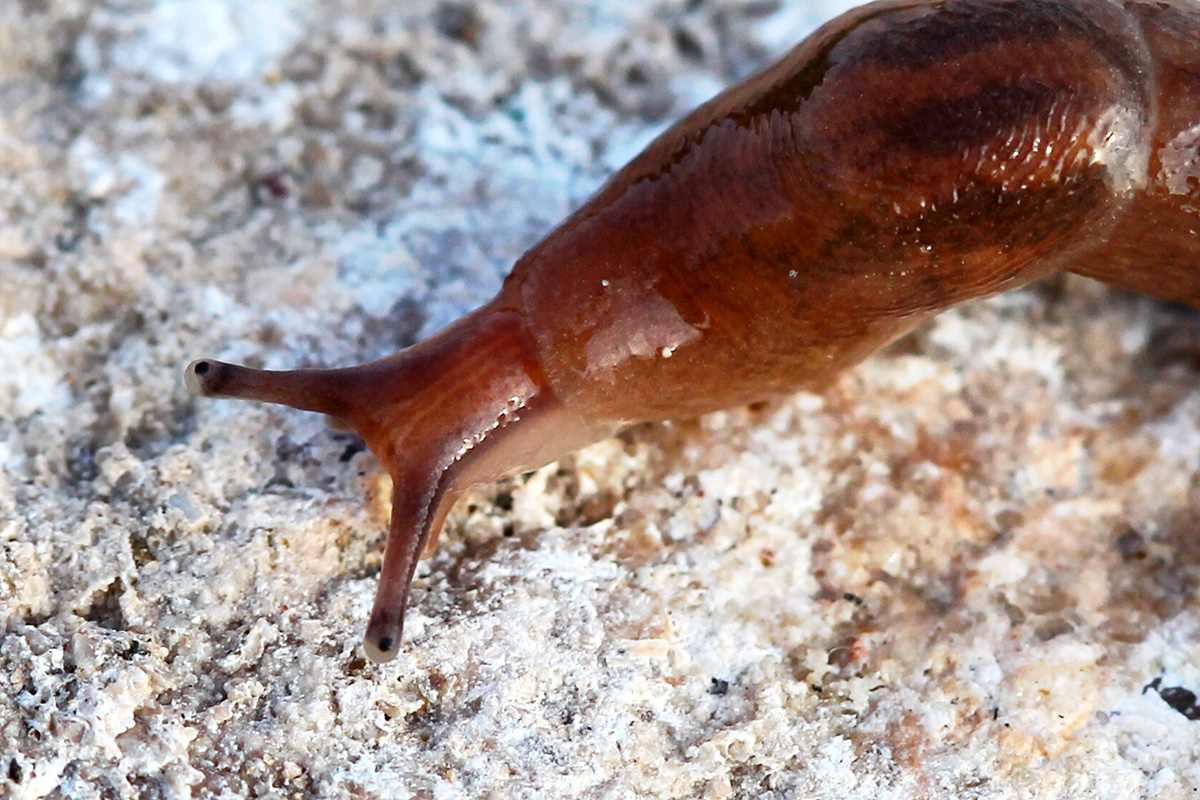
Bring out your slugs. Scientists want to use parasites to control slug populations in a natural way. Image credit CC by 2.0 to Renee.
Sick of slugs? Bring them to campus, where one University of Alberta biologist is on a mission to bring Canadian slugs under control.
Slugs are becoming an increasingly prominent pest, both in gardens and farms, and their effects are increasingly damaging. Lien Luong, assistant professor in the Department of Biological Sciences, is an expert in parasites and wants to use them to control slug populations in a natural way-without pesticides.
"The ultimate goal is to identify which parasites are infecting Canadian slugs and use that natural enemy to suppress the slug population, and approached known as biological control," explained Luong. "To do that, we need to first find out what type of parasites infect slugs in Alberta."
That's where local gardeners, farmers, and aspiring green thumbs come in. Luong and her collaborator Jenna Ross, a Nuffield Scholar from Stellenbosch University, have put out a call for local slugs, which will then be brought to the lab for identification. "If there are parasites, we will identify them using either morphological characteristics or molecular techniques," explained Luong. "That's the first step in developing a biological control agent."
A growing problem
Anecdotal evidence suggests that the slug population is getting worse in Alberta, but scientists have yet to quantify the epidemic. "We know that the reports of slugs being a problem has gone up gradually over the years," explains Luong. "It is an emerging concern that if left unchecked could become a serious problem for gardens and agricultural industries."
While the cause is a combination of factors, climate change likely plays a role. Milder winters allow more slugs to survive the cold. The growing of slug-favoured plants, combined with certain farming practices may be another reason their numbers appear to be increasing in the province.
Be part of the solution
Know a slug who'd like to participate in Luong's study? Here's how to catch one.
Early in the morning or after the sun goes down, slugs come out of hiding and crawl along leaves to feed. When you find one, scoop them up using a spoon or a gloved hand. Avoid skin contact. Next, place your live slugs in a small, enclosed container with a piece of damp paper towel and some lettuce, and poke some holes in the top for air.
"Just create a little happy house for them," explained Luong. "Until they arrive at in my lab where they will meet their demise."
Got a live slug? Contact Luong at lluong@ualberta.ca to arrange a drop-off or pick-up time.